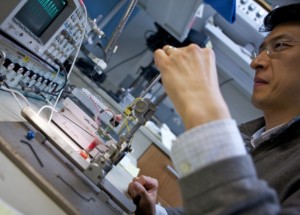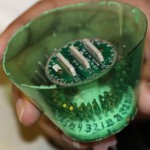In Vivo Single Neuron Recording
Electrophysiological recording experiments in the conscious animal enable direct correlation of neural activity with behavior, especially when the activity is a measure or reflection of a cognitive process such as learning and memory.
Our lab conducts multiple-single neuron recording experiments using chronically implantable microdrives in rabbits as they perform eye blink conditioning, an associative memory task.
We use these techniques to test hypotheses about the neurophysiological properties and the functional role of neurons from brain regions that are involved in associative memory such as the prefrontal cortex, hippocampus, thalamus, and the basal ganglia.
Recent publications:
- Hattori S, Chen L, Weiss C, Disterhoft JF (2015) Robust hippocampal responsivity during retrieval of consolidated associative memory. Hippocampus 25(5): 655-69.
- Hattori S, Yoon T, Disterhoft JF, Weiss C (2014) Functional reorganization of a prefrontal cortical network mediating consolidation of trace eyeblink conditioning. J Neurosci 34(4):1432-45.
- Flores, L. C. and J. F. Disterhoft (2009). Caudate nucleus is critically involved in trace eyeblink conditioning. J Neurosci 29(46): 14511-14520.
- Weible, A. P., J. A. O’Reilly, C. Weiss and J. F. Disterhoft (2006). Comparisons of dorsal and ventral hippocampus cornu ammonis region 1 pyramidal neuron activity during trace eye-blink conditioning in the rabbit. Neuroscience 141(3): 1123-1137.
- Weible, A. P., C. Weiss and J. F. Disterhoft (2003). Activity profiles of single neurons in caudal anterior cingulate cortex during trace eyeblink conditioning in the rabbit. J Neurophysiol 90(2): 599-612.


